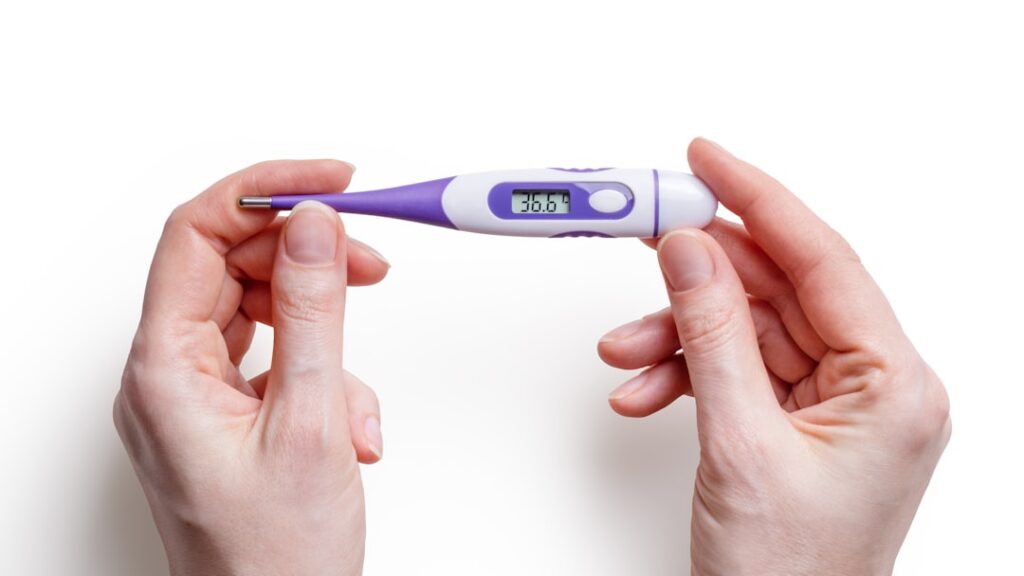Measurement is the process of determining the size, length, or amount of something using a standard unit of measurement. It is an essential skill in various fields such as construction, engineering, science, and even in everyday tasks like cooking and crafting. The most common units of measurement include inches, centimeters, feet, and meters. Understanding the basics of measurement involves knowing how to use a ruler, which is a fundamental tool for taking linear measurements.
When using a ruler, it is important to understand the concept of units and increments. For example, an inch ruler is divided into 16 increments, with each increment representing 1/16 of an inch. On the other hand, a centimeter ruler is divided into 10 increments, with each increment representing 1/10 of a centimeter. It is crucial to be familiar with these units and increments to accurately measure objects. Additionally, understanding the concept of precision and accuracy is essential in measurement. Precision refers to the level of consistency in repeated measurements, while accuracy refers to how close the measured value is to the true value. Both precision and accuracy are important in obtaining reliable measurements.
In summary, understanding the basics of measurement involves knowing how to use a ruler, being familiar with units and increments, and understanding the concepts of precision and accuracy. These foundational principles are crucial for obtaining accurate measurements in various applications.
Key Takeaways
- Understanding the basics of measurement is essential for accurate results
- Choosing the right ruler for the job depends on the size and precision of the measurement needed
- Proper technique for measuring with a ruler involves aligning the starting point and reading the measurement carefully
- Tips for accurate measurements include using a stable surface and ensuring the ruler is straight
- Using a ruler tube for measuring cylindrical objects can provide more accurate results than a regular ruler
- Common mistakes to avoid when using a ruler tube include not aligning the object properly and not reading the measurement at eye level
- Advanced techniques for precision measurement may involve using specialized tools and equipment for more accurate results
Choosing the Right Ruler for the Job
When it comes to choosing the right ruler for a specific measurement task, it is important to consider the units of measurement and the level of precision required. There are different types of rulers available, each designed for specific purposes. For linear measurements in inches, an inch ruler is the most suitable tool. Inch rulers come in various lengths, such as 6 inches, 12 inches, and 24 inches, providing flexibility for different measurement needs. On the other hand, for metric measurements in centimeters or millimeters, a metric ruler is the appropriate choice. Metric rulers are available in lengths such as 15 centimeters and 30 centimeters, offering versatility for different measurement tasks.
In addition to standard rulers, there are specialized rulers designed for specific applications. For example, a carpenter’s ruler, also known as a framing square, is designed for measuring and marking right angles in woodworking and construction. Engineers’ scales are used for measuring and drawing scaled engineering drawings. Furthermore, flexible rulers, also known as tape measures, are ideal for measuring curved or irregular surfaces. When choosing the right ruler for the job, it is important to consider the specific requirements of the measurement task and select a ruler that provides the necessary units and precision.
In conclusion, choosing the right ruler for a measurement task involves considering the units of measurement, precision requirements, and any specialized features needed for the specific application. By selecting the appropriate ruler, accurate and reliable measurements can be obtained for various purposes.
Proper Technique for Measuring with a Ruler
Proper technique is essential when using a ruler to ensure accurate measurements. The first step in measuring with a ruler is to place the starting point of the object at the zero mark on the ruler. It is important to align the object parallel to the ruler to obtain an accurate measurement. When measuring length or distance, it is crucial to ensure that the object is in contact with the ruler without any gaps or overlaps. This helps prevent errors in measurement due to misalignment or misplacement of the object.
In addition to proper alignment, it is important to read the measurement markings on the ruler carefully. When using an inch ruler, each increment represents 1/16 of an inch, while on a metric ruler, each increment represents 1 millimeter or 1/2 millimeter depending on the scale. It is essential to accurately identify and record the measurement reading to avoid errors. Furthermore, when measuring objects that extend beyond the length of the ruler, it is important to make multiple measurements and add them together to obtain the total length.
Overall, proper technique for measuring with a ruler involves aligning the object parallel to the ruler, ensuring contact without gaps or overlaps, and accurately reading the measurement markings. By following these techniques, accurate and reliable measurements can be obtained for various applications.
Tips for Accurate Measurements
| Measurement Tips | Accuracy |
|---|---|
| Use the right tools | Ensures precise measurements |
| Check calibration | Regularly calibrate instruments |
| Avoid parallax error | Read instruments at eye level |
| Minimize environmental factors | Control temperature and humidity |
Obtaining accurate measurements with a ruler requires attention to detail and precision. To ensure accurate measurements, it is important to use a stable surface when measuring objects. Placing the ruler on a flat and stable surface helps prevent movement or shifting during measurement, which can lead to errors. Additionally, using a magnifying glass or a ruler with magnified markings can aid in obtaining precise measurements, especially when dealing with small increments.
Another tip for accurate measurements is to take multiple measurements and calculate an average if possible. This helps account for any variations or inconsistencies in measurements due to human error or slight differences in object dimensions. When measuring curved or irregular surfaces, using a flexible ruler or tape measure can provide more accurate results compared to a rigid ruler.
Furthermore, it is important to handle the ruler with care to avoid damage or deformation that could affect its accuracy. Storing rulers in a protective case or holder when not in use can help maintain their precision over time. Lastly, practicing good lighting conditions and using a sharp pencil or marker for marking measurements can contribute to obtaining accurate results.
In summary, obtaining accurate measurements with a ruler involves using a stable surface, considering multiple measurements and averages, using appropriate tools for specific surfaces, handling rulers with care, and ensuring good lighting conditions. By following these tips, precise and reliable measurements can be achieved for various applications.
Using a Ruler Tube for Measuring Cylindrical Objects
Measuring cylindrical objects such as pipes, rods, or tubes requires a specialized tool known as a ruler tube or circumference tape measure. A ruler tube is designed specifically for measuring the circumference of cylindrical objects and determining their diameter or radius. It consists of a flexible tape with circumference markings that wrap around the cylindrical object to provide an accurate measurement.
When using a ruler tube, it is important to wrap the tape around the widest part of the cylindrical object while ensuring that it lies flat and snug against the surface without any gaps or overlaps. This ensures an accurate measurement of the circumference. Once the circumference measurement is obtained from the ruler tube, it can be used to calculate the diameter or radius of the cylindrical object using mathematical formulas.
In addition to measuring circumference, some ruler tubes also include diameter or radius conversion tables printed on them for quick reference. These conversion tables provide instant calculations for diameter or radius based on the measured circumference. Overall, using a ruler tube for measuring cylindrical objects provides a convenient and accurate method for obtaining dimensions necessary for various applications such as construction, engineering, and manufacturing.
Common Mistakes to Avoid When Using a Ruler Tube

While using a ruler tube can provide accurate measurements for cylindrical objects, there are common mistakes that should be avoided to ensure precision and reliability. One common mistake is not wrapping the tape around the cylindrical object evenly or tightly enough. This can result in inaccurate circumference measurements and subsequently incorrect calculations for diameter or radius.
Another mistake to avoid is misreading or misinterpreting the markings on the ruler tube. It is important to carefully align and read the markings to obtain an accurate circumference measurement. Additionally, using a worn-out or damaged ruler tube can lead to inaccuracies in measurements due to distorted markings or tape deformation.
Furthermore, it is important to ensure that the cylindrical object being measured is perfectly round and not distorted or irregular in shape. Measuring non-cylindrical objects with a ruler tube can lead to inaccurate results and should be avoided.
In summary, common mistakes to avoid when using a ruler tube include uneven wrapping of the tape around cylindrical objects, misreading markings, using damaged tools, and measuring non-cylindrical objects. By being mindful of these mistakes and taking precautions to avoid them, accurate measurements can be obtained using a ruler tube.
Advanced Techniques for Precision Measurement
In addition to basic measurement techniques with rulers and ruler tubes, there are advanced techniques that can be employed for precision measurement in various fields such as engineering and manufacturing. One advanced technique involves using digital calipers or micrometers for highly precise measurements of small objects or components. Digital calipers provide accurate readings of length, width, and depth with digital displays for easy reading and recording of measurements.
Another advanced technique is coordinate measuring using coordinate measuring machines (CMM). CMMs are sophisticated devices that use probes and sensors to measure complex geometries and dimensions of mechanical parts with high accuracy. They are commonly used in quality control processes in manufacturing industries.
Furthermore, laser scanning technology has become increasingly popular for non-contact measurement of large objects such as buildings, vehicles, and industrial equipment. Laser scanners capture detailed 3D data of surfaces and dimensions with high precision for various applications including reverse engineering and inspection.
In summary, advanced techniques for precision measurement include digital calipers, coordinate measuring machines (CMM), and laser scanning technology. These advanced tools and methods provide highly accurate measurements for complex geometries and large-scale objects in engineering and manufacturing applications.
If you’re interested in exploring more content related to ruler tube, you might want to check out this article on Myntra Life. This website offers a variety of lifestyle and fashion-related content that could complement your interests in ruler tube. Whether you’re looking for fashion tips, beauty advice, or lifestyle inspiration, Myntra Life has something for everyone. So, if you’re looking to expand your horizons beyond ruler tube, be sure to give this article a read.
FAQs
What is Ruler Tube?
Ruler Tube is a website that provides a platform for users to access and watch adult videos.
Is Ruler Tube free to use?
Yes, Ruler Tube is a free website for users to access and watch adult videos.
Is Ruler Tube safe to use?
As with any adult website, users should exercise caution and use appropriate security measures when accessing Ruler Tube to ensure their online safety.
Is Ruler Tube legal?
The legality of adult websites such as Ruler Tube can vary depending on the laws and regulations of different countries and regions. Users should familiarize themselves with the laws in their area before accessing such content.
Can I upload my own videos to Ruler Tube?
Ruler Tube does not allow users to upload their own videos. The content on the website is curated and managed by the site’s administrators.
Is there a way to report inappropriate content on Ruler Tube?
Ruler Tube provides a reporting feature for users t







